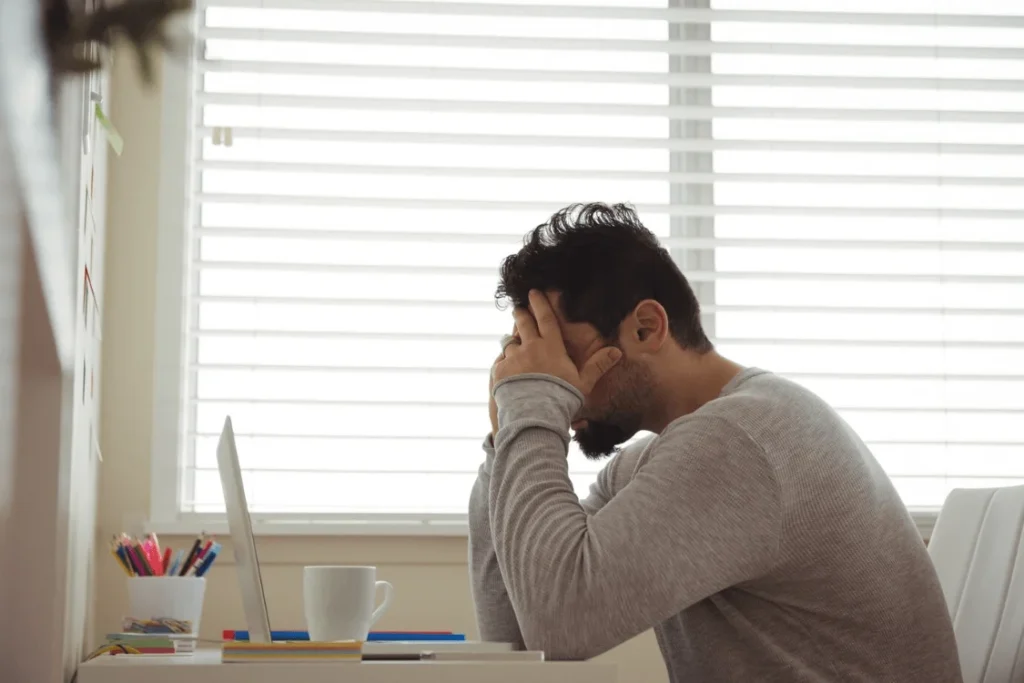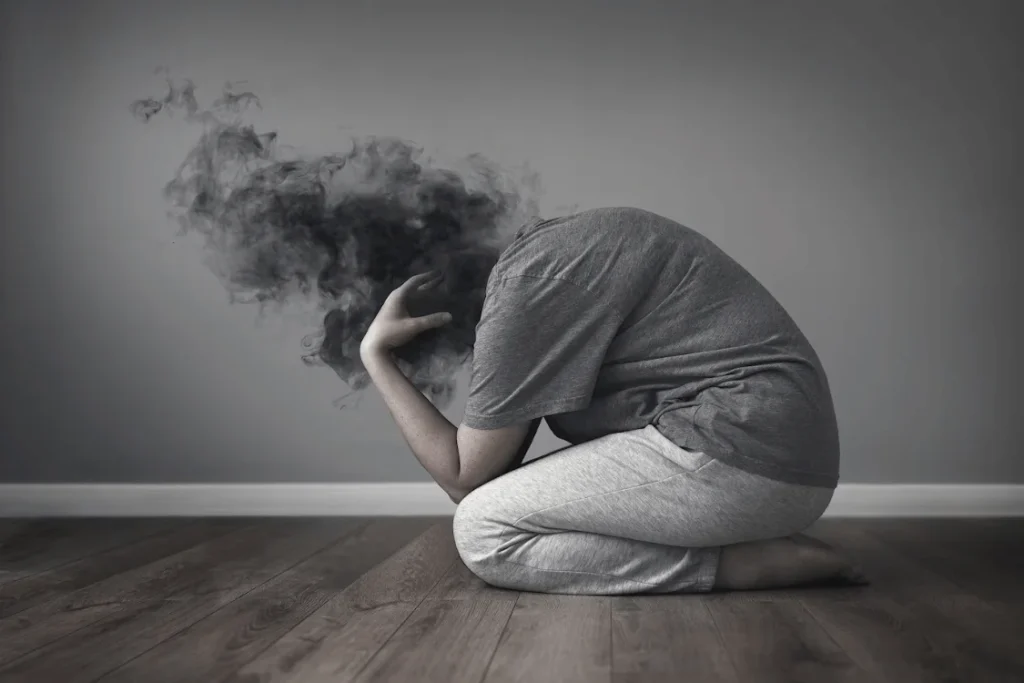
Treatment for Sex Addiction and Compulsive Sexual Behavior
Sex addiction can feel isolating; however, recovery is possible. You might already know some treatment options, but has anyone ever explained the full picture, what it is, why it happens, and how it’s treated?
This article offers a clear, compassionate look at the most effective treatment for sex addiction, so you can take informed steps toward lasting change.
What Is Sex Addiction?
Sex addiction, also referred to as compulsive sexual behavior or hypersexual disorder, can significantly disrupt emotional health, work, and relationships. It often involves persistent urges, distressing sexual thoughts, and actions that feel increasingly difficult to control.
Estimates suggest that sexual addiction affects 3–6% of the general U.S. population. Higher rates have been observed among patients diagnosed with hypersexual disorders and those involved in the criminal justice system for sexual offenses. This data positions sexual addiction as a serious public health issue with growing recognition across clinical settings.
Diagnostic Criteria
Although sex addiction is not officially listed in the Statistical Manual of Mental Disorders (DSM-5), many clinicians use consistent behavioral criteria to assess its severity. Key signs include difficulty controlling sexual urges, spending excessive time engaging in sexual activity, or continuing these behaviors despite negative outcomes such as shame, relationship strain, or legal trouble.
Diagnosis typically requires symptoms to persist for at least six months and cause clear disruption in daily functioning. You may repeatedly attempt to stop or limit sexual behavior but feel unable to do so, leading to emotional distress or harm to yourself or others.
Patterns of Compulsive Sexual Behavior
Compulsive sexual behavior takes many forms. You may find yourself preoccupied with sexual fantasies, spending hours viewing pornographic content, pursuing multiple sexual encounters, or engaging in high-risk behaviors despite consequences. Often, these actions begin as ways to cope with emotions like loneliness, stress, or shame, but become compulsive over time.
People with this condition frequently report spending significant time on sexual activities, neglecting important responsibilities, and feeling a loss of control. Even when there is a strong desire to stop, sexual impulses can be overwhelming and difficult to manage without support.

Related Mental Health Conditions
Sex addiction rarely exists in isolation. It’s commonly linked to other mental health challenges such as depression, anxiety, substance misuse, or impulse control disorders. Some may turn to sexual gratification as a way to escape emotional discomfort, repressed childhood trauma, or low self-esteem.
In some cases, people with obsessive-compulsive disorder, bipolar disorder, or a history of substance addiction may also experience problematic sexual behavior. These co-occurring conditions can intensify compulsive patterns and complicate the treatment plan. An integrated, trauma-informed approach is often necessary to treat both the origins of addiction and the underlying emotional distress.
Diagnosis and Assessment of Sexual Addiction
A comprehensive evaluation is the first step in creating an effective treatment for sex addiction. A licensed mental health professional will explore your sexual thoughts and behaviors, assess for co-occurring conditions, and identify any related risks.
Assessment Tools and Evaluation
Standard diagnostic tools such as the Sexual Addiction Screening Test (SAST) and structured clinical interviews are commonly used. These assessments help providers understand the severity of the problem, the frequency of sexual behavior, and whether you meet criteria for compulsive sexual tendencies.
Clinicians may also use behavior logs, relationship histories, or collateral input (with consent) to create a clearer picture. Importantly, providers will assess whether behaviors have caused legal consequences, relationship damage, or impairments in daily life. In some cases, screening for alcohol or drug use or other behavioral issues is necessary to support accurate diagnosis and tailored care.
Co-occurring Disorders and Dual Diagnosis
Many people with sex addiction also experience mood, anxiety, or borderline personality disorders. When two or more conditions are present, this is known as a dual diagnosis. These overlapping concerns can make treatment more challenging, but also highlight the need for an integrated model of care.
For example, someone using sexual activity to regulate emotions may also struggle with trauma, depression, or compulsive behaviors. Treating both conditions together (not in isolation) improves outcomes and reduces the risk of relapse.

Treatment for Sex Addiction
An effective treatment plan addresses not only the behavior but also the emotional, relational, and psychological roots of sexual addiction. A combination of therapy, medication, and support systems is often most effective.
Psychotherapy and Counseling
Cognitive-behavioral therapy (CBT) is one of the most widely used interventions for the treatment of sex addiction. CBT helps individuals recognize patterns, challenge unhelpful thoughts, and develop healthier coping strategies.
A clinical study with 137 male participants diagnosed with hypersexual disorder found that seven weeks of group-administered CBT significantly reduced compulsivity and improved overall psychiatric well-being compared to a waitlist control. These results underscore CBT’s role as a reliable first-line option for the treatment of compulsive sexual behavior.
Individual therapy can also help uncover deeper causes, such as childhood trauma or unresolved emotional pain. Family therapy may be included to support relationship repair and mutual understanding. Whether in-person or online, regular therapy sessions with a qualified provider help sustain long-term recovery.
Group Therapy and Peer Support
Group therapy and peer support networks such as Sex Addicts Anonymous (SAA) or Sex and Love Addicts Anonymous (SLAA) provide structure, shared accountability, and emotional connection. Modeled after Alcoholics Anonymous, these 12-step programs offer a safe space to discuss challenges without judgment.
Listening to others, learning from their stories, and participating in shared recovery tools can reduce shame and increase motivation. Whether peer-led or facilitated by professionals, group settings offer a vital layer of community and encouragement throughout the recovery process.
Medication Management
For some people, medication can support treatment for sexual addiction by helping manage obsessive thoughts or intense cravings. Selective serotonin reuptake inhibitors (SSRIs) may reduce impulsivity, particularly when depression or anxiety are also present.
In certain cases, anti-androgens or other pharmacological treatments are prescribed to reduce sexual drive, though this is typically done under close supervision. Medication is not a cure but can be part of a broader treatment program, especially when paired with therapy and behavioral strategies.
Residential and Outpatient Programs
Inpatient residential treatment offers immersive, round-the-clock care in a structured setting. These treatment facilities often provide evidence-based care, support groups, recreation, and medical oversight for those with severe or high-risk behaviors.
Alternatively, outpatient treatment or intensive outpatient programs (IOP) allow individuals to live at home while attending regular therapy. These programs can be just as effective for those with supportive home environments or less acute symptoms. Choosing the right level of care depends on your individual needs, safety concerns, and recovery goals.

Coping Strategies and Support Resources
Recovery from sex addiction is an ongoing process. It requires new skills, healthy routines, and emotional support to replace old patterns. Learning how to manage urges, rebuild trust, and navigate relationships is essential for long-term success.
Developing Healthy Coping Mechanisms
Triggers for sexual impulses can include stress, shame, or boredom. Recognizing these moments and having a plan in place can make all the difference. Techniques like mindfulness, physical exercise, deep breathing, or creative expression help reduce reactivity.
CBT-based tools can also be used daily to monitor thoughts, shift behaviors, and prevent relapse. Support from peers or online forums reinforces these habits by creating a culture of shared progress and accountability.
Addressing Shame and Guilt
Many patients feel profound shame or guilt around engaging in sexual behaviors they regret. These emotions can lead to isolation and may delay seeking help. But shame thrives in silence, and healing begins when it is brought into the open.
Therapy that focuses on sexual trauma, attachment wounds, or emotional neglect can be especially helpful. Group settings or one-on-one counseling provide safe environments to examine the roots of shame and develop compassion for yourself.
Improving Intimacy and Trust
Sex addiction involves secrecy and broken trust, which often damages romantic or family relationships. Restoring those bonds takes time, honesty, and effort. Structured disclosure and individual therapy or couples counseling can support this healing process.
Intimacy also involves re-learning how to connect emotionally, not just physically. Acts of consistency (e.g., showing up, setting boundaries, listening) can help rebuild closeness and establish new foundations for love and connection.

Take The First Step Towards Recovery at Twilight Recovery
Sex addiction and substance use often mask deeper pain, unresolved trauma, or unmet emotional needs. Twilight Recovery offers a therapeutic environment where these issues can be explored safely, without judgment. Our integrated model recognises that lasting change doesn’t come from treating symptoms alone; it comes from addressing the root causes that fuel them.
When you’re ready, reach out. Our professionals will help you make a tailored plan for your needs. No commitment.
Frequently Asked Questions
What are the most effective therapy approaches for managing compulsive sexual behavior?
CBT, group therapy, trauma-informed care, and individual therapy are all widely used forms of therapy in treatment for sex addiction.
Can medication play a role in the treatment of sexual addiction, and if so, what types are commonly prescribed?
Yes. Selective serotonin reuptake inhibitors (SSRIs) or anti-androgens may be used to treat compulsive behavior under medical supervision.
How long does treatment typically last for individuals dealing with sexual addiction issues?
Duration varies, but many individuals benefit from several months to a year of therapy and support, depending on progress and complexity.
Are there specific support groups for sexual addiction, and how can they assist in the recovery process?
Yes. Groups like Sex Addicts Anonymous and Sex and Love Addicts Anonymous offer tools, accountability, and shared experience for those dealing with sex addiction.
What strategies are recommended for preventing relapse in those who have sexually addictive behaviors?
Relapse prevention includes avoiding triggers, attending therapy, practicing coping strategies, and maintaining a connection with support networks.
How can partners or family members support a loved one during their treatment for compulsive sexual behaviors?
They can offer emotional support, attend joint counseling, and learn more about the recovery process to improve communication and trust.

